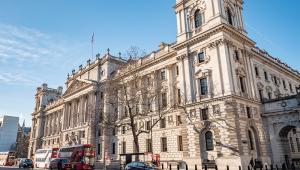This will be in marked contrast to the last decade when educational achievements of graduates going into teaching and health occupations has remained steady, says a report released by the think-tank today.
Luke Sibieta, author of the study, said: "Between 2015 and 2020 public sector pay is set to decline more rapidly relative to that in the private sector.
“It is hard to believe this won't affect the willingness of highly qualified individuals to choose these occupations.”
The report, funded and published by the Office of Manpower Economics, found the average educational achievements of graduates going into teaching has been steady since the recession in 2008.
Average A-level results of those who left university in 2014-15 and went into teaching was equivalent to three A-levels and an AS level at grade B.
Trainee teachers with a degree in physics, maths, computing or modern foreign languages have average A-Level results well above those for both teachers and graduates as a whole, the IFS found.
Since 2012 teachers in high-priority subjects have been eligible for large bursaries whilst training, which have grown over time.
Trainee teachers with first-class degrees in physics, computing and maths are able to receive tax-free bursaries of more than £25,000.
Neil Amin-Smith, another author of the report, said: “Whether [these bursaries] represent genuine value for money for the taxpayer will be determined by whether these teachers stay in the profession beyond one or two years.”
Average A-level results for graduates becoming doctors, nurses or joining NHS professions allied to medicine have remained steady over the past decade, the report also found.
But there were wide variations in educational achievement of different health professionals. For those leaving higher education in 2014-15, the average A-level results of people becoming doctors were equivalent to 4 As at A-level; ABB at A-level and an AS-level at grade B for NHS professions allied to medicine – such as radiographers – and 3 Cs at A-level and AS-level at grade C for nurses and midwives.
The report notes the gap between public and private pay widened between 2006/07 and 2010/1. The public sector – which always has higher pay, on average, than the private sector – enjoyed a 3.7% pay premium above the private sector in 2006/07. This went up to 6% in 2010/11 but has since come down again to 3.6% in 2015/16.



















